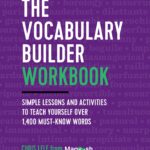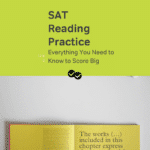In spoken English, there’s a pattern of stressing syllables and words that makes a sort of rhythm. The SAT Reading Comprehension doesn’t have any questions about that, exactly, but we can learn a bit from it. And why we stress those sounds has something to do with finding important information in SAT reading comp.
To get a feel for the rhythm, look at the nonsense word “zippity-doo-dah.” Well, don’t just look at it—say it out loud. Really. It’s important that you hear how it sounds. Oh, wait. Did you just say that in a room full of people while looking at your screen? I bet you feel pretty weird, now. Sorry about that. Just tell everybody you’re preparing for the SAT. They’ll understand. I promise.
Anyway, did you hear the rhythm of it? That’s what’s important. Now, for a real English phrase. So maybe don’t say this one out loud… just say it in your head. Altogether now: “How did you do that?” Did you notice that it sounds a lot like “zippity-doo-dah?” It has the same rhythm, and that’s not by chance.
“Zippity-doo-dah” is supposed to sound like English, but the only way to make nonsense words English-like is to give them stress patterns similar to how we speak. Having trouble hearing it? Try listening to this song that mimics English (and not getting it stuck in your head). It may be nonsense, but it follows our rhythm patterns.
So what’s that rhythm for, anyway?
Why we stress certain words in spoken English
One of the reasons we stress words is to highlight the important pieces of the sentence. If you had just done a magic trick, and I asked you “How did you do that?” I’d stress how and do because those are key to the meaning. If I were a sign-language using gorilla and I signed “How do?”, you’d get the question just as clearly even without the other words.
Of course, it’s a lot more complicated than that… but this isn’t a linguistics class, and I’m not going to pretend I’m a linguistics professor. Besides, the SAT doesn’t test that. The point is that we need stresses in spoken English to make focal points obvious.
But in writing, we don’t have so much flexibility with stresses. Academic writing especially ends up being a bit flat, sometimes.
Transition words highlight important RC details on the SAT
It’s for that reason that in writing, we end up using a whole lot of linking words—or at least more varied ones. For instance, how many words do we use to contrast two thoughts when we speak? Usually, it’s just the word “but.” How about when we write?
All of the words and phrases below show contrast, and most of them are much more common in writing than in speech:
But
However
Yet
On the other hand
Nonetheless
Nevertheless
Even so
Although
Though
Despite that
In spite of that
Regardless
In any case
Still
Be that as it may
Granted, there are a number of different shades of meaning in that list, but a lot of them are interchangeable. And most of them carry a lot more emphasis than little ol’ “but.”
They’re heavily stressed (not gaining-weight stressed, just emphatic stressed)
because they’re supposed to point to an important contrast. Just using “but” might not show the importance because we can’t make the word really loud and forceful in writing like we can in speech. We can’t write “BUUuut…” like we can say it.
What does this mean for SAT reading comp?
On your SAT, when you see transition words in SAT reading passages, pay special attention to what comes after them and make note of it. It’s not always the case that the detail itself turns out to be important, but the relationship between ideas is going to have a very real effect on the meaning of the overall structure of the passage.
If you see “for example” or “for instance,” then you know that a point is important enough that it has to be explained. If you see “not only did…” or “what’s more…,” then you know that there’s a list of details which probably illustrate some bigger message. Think: what do those details have in common?
There are a whole lot of words that can illuminate the organization of an SAT reading passage. You don’t have to learn any new vocabulary here, but it’s a good idea to sort through that list to see what the most common SAT words are that you should probably know for the passages.
And that big-picture structure is one of the most important critical reading tips to increase your CR score.






Leave a Reply